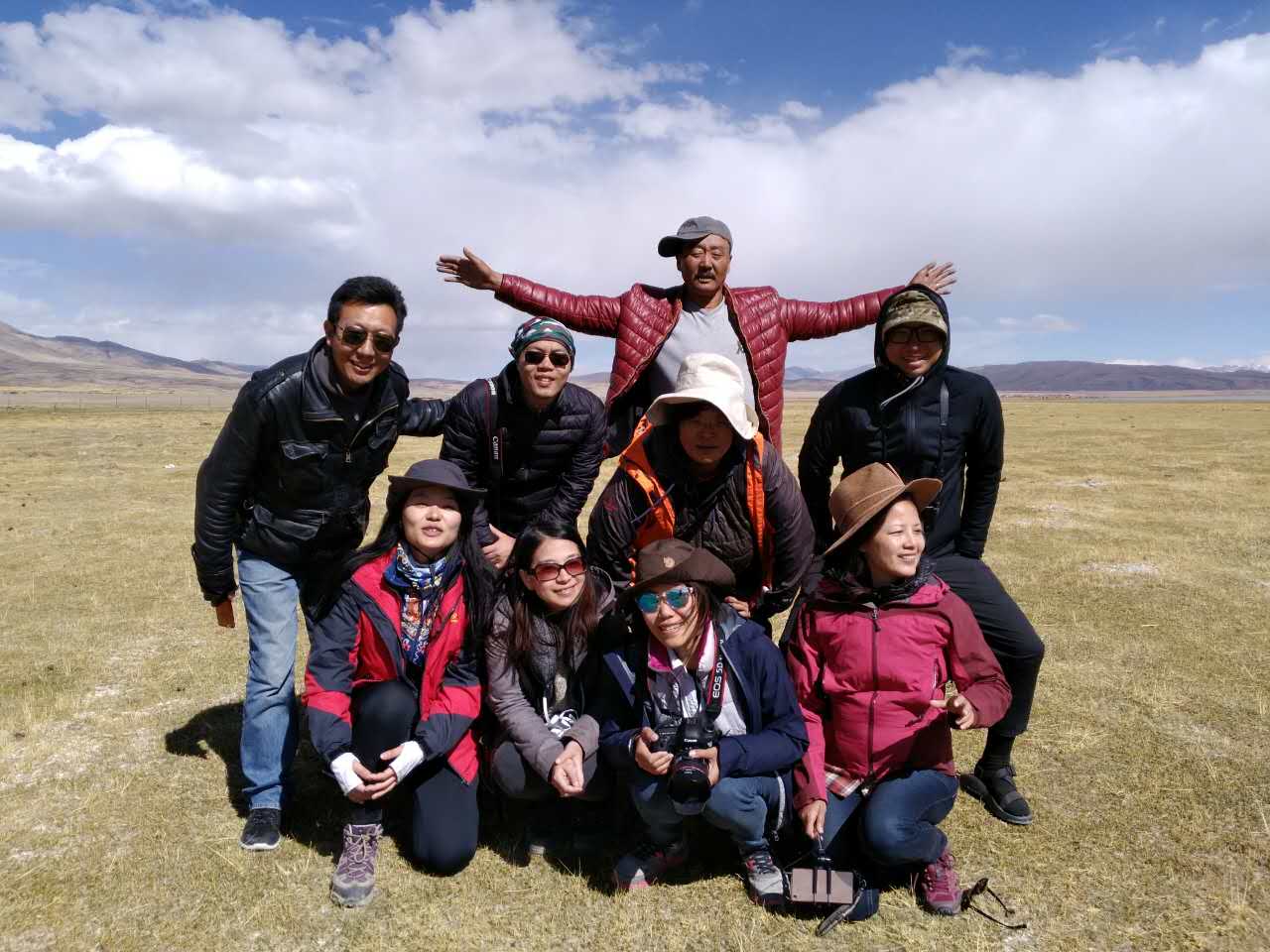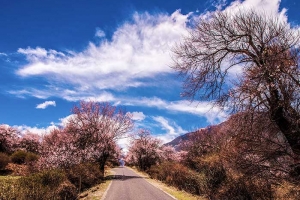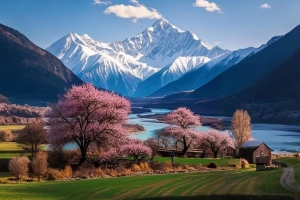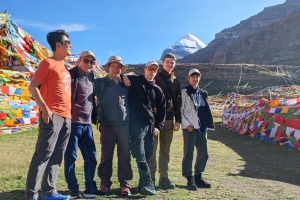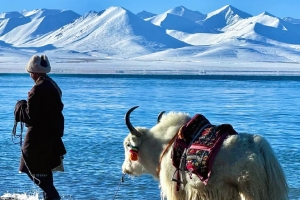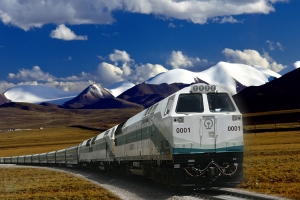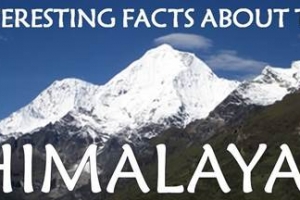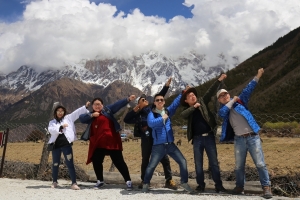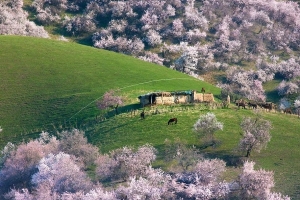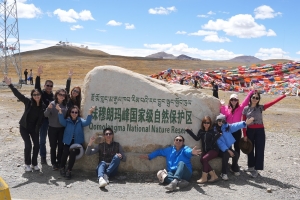In fact, Americans have become one of the largest groups of international visitors to Tibet, drawn by its unique blend of natural wonders and rich cultural heritage. This guide will walk you through everything you need to know about planning your Tibet adventure from the USA, including travel logistics, permit requirements, tour options, seasonal insights, and cultural highlights. Read on for an in-depth look at how you can make your dream trip to Tibet a reality.
Frequently Asked Questions About Traveling to Tibet from USA
- Can Americans Visit Tibet?
Yes, American citizens can absolutely visit Tibet. In fact, they are among the largest groups of international visitors, drawn by the region’s natural wonders and rich cultural heritage.
- What Permits Do I Need?
To visit Tibet, you will need both a Chinese Tourist Visa (L Visa) and a Tibet Travel Permit. The Chinese visa is obtained from a Chinese Embassy or Consulate, while the Tibet Travel Permit must be arranged through a local travel agency.
- Is Independent Travel Allowed in Tibet?
Currently, independent travel is not permitted for overseas visitors. All travelers must join a guided tour, either in a small group or a private tour led by a local expert.
- What Are the Best Times to Visit?
The most popular times to visit Tibet are during the spring (April to May) and autumn (September to October) months when the weather is most favorable for outdoor activities and sightseeing. Summer offers a chance to experience vibrant festivals, while winter provides a unique, if challenging, travel experience.
- How Do I Get to Tibet?
Most American travelers fly into major Chinese cities such as Beijing, Shanghai, or Chengdu and then catch a connecting flight to Lhasa. Alternatively, you can opt for a scenic train ride on the Qinghai-Tibet Railway or an overland road trip if you’re up for an adventure.
Why Tibet is a Must-Visit Destination for American Travelers
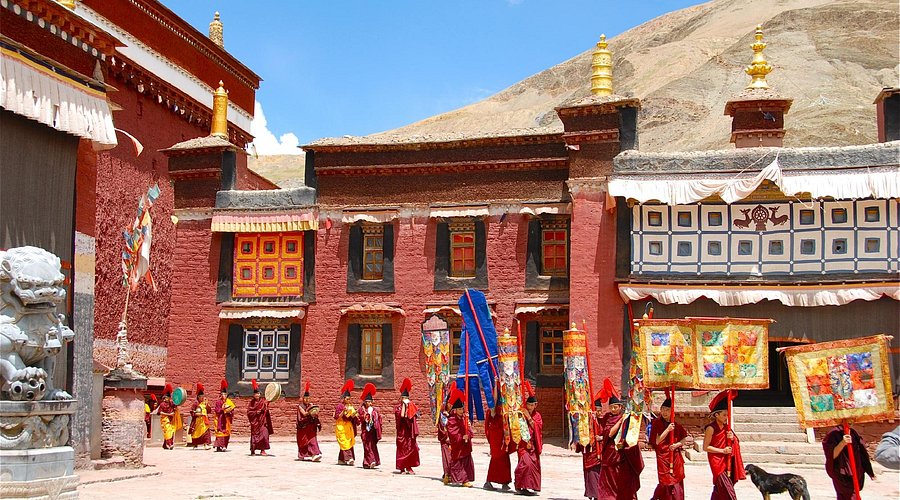
Lhasa Jokhang Temple
Unrivaled Natural Beauty and Adventure
Tibet’s dramatic landscapes make it a haven for outdoor enthusiasts and adventure seekers. Imagine standing at the foot of the world’s highest peak or trekking through ancient routes that have been traveled by pilgrims for centuries. Among the most popular attractions is the trek to Everest Base Camp. Unlike the restricted views from Nepal’s side, the Tibetan approach offers unobstructed panoramas of the mighty north face of Mount Everest and its neighboring giants such as Lhotse, Makalu, and Cho Oyu. Whether you are a seasoned trekker or simply an admirer of majestic scenery, Tibet provides an immersive experience in nature at its rawest.
Spiritual and Cultural Exploration
Beyond the physical challenges and breathtaking vistas, Tibet offers a deeply enriching cultural and spiritual journey. American travelers are increasingly drawn to the region for its ancient monasteries, vibrant festivals, and the opportunity to experience Tibetan Buddhism up close. Walk along the Barkhor Kora in Lhasa and feel the pulse of tradition as locals and pilgrims perform their daily rituals. Discover exquisite Thangka paintings, participate in meditative retreats, and learn about the region’s mystical history—all of which add layers of meaning to your travel experience.
A Hub of International Visitors
Interestingly, Americans are among the largest groups of international visitors to Tibet. In the first half of 2024, US citizens ranked as the second largest group of overseas travelers—only surpassed by Singaporeans. This growing trend underscores the international appeal of Tibet and the increasing ease with which visitors can experience its wonders. The influx of global travelers has also encouraged improvements in local infrastructure, making Tibet more accessible and traveler-friendly than ever before.
How to Get to Tibet from the USA
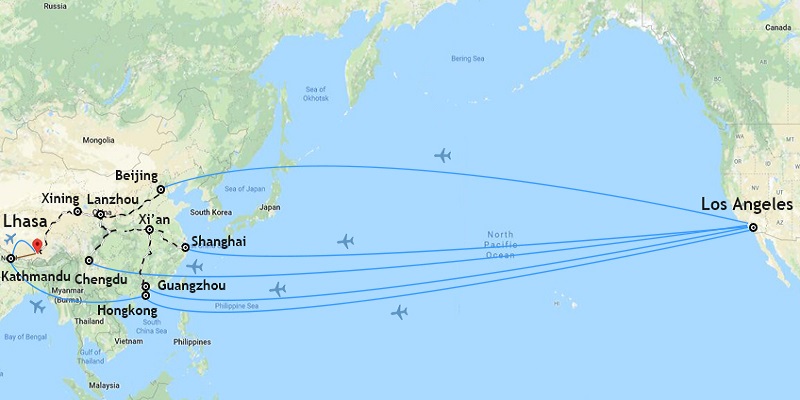
Los Angeles to China Route
Step 1: Arriving in Mainland China
Since Tibet is an autonomous region within China, the first step for American travelers is to secure entry into China. There are numerous direct flights available from major US cities like Los Angeles, San Francisco, Seattle, and Detroit to key Chinese gateway cities such as Beijing, Shanghai, Guangzhou, and Chengdu. These cities serve as excellent transit hubs for your onward journey to Tibet.
Flight Connections and International Hubs
- Beijing: With its international airport serving as one of the primary gateways into China, Beijing offers several daily flights connecting to Tibet. Direct flights from Beijing to Lhasa typically take around 4.5 hours.
- Shanghai & Guangzhou: While flights from these cities might involve a stopover, they offer additional scheduling flexibility and competitive prices.
- Chengdu: Known for its cultural attractions and proximity to Tibet, Chengdu is an ideal departure point if you are considering overland travel to Lhasa.
Step 2: Reaching Tibet via Air or Rail
Once in China, you have multiple options for reaching Tibet:
By Air: Quick and Convenient
The fastest method is to take a direct flight to Lhasa, the capital of the Tibet Autonomous Region. Daily flights from Beijing and Chengdu make air travel both convenient and time-efficient. Flying not only saves time but also offers breathtaking aerial views of the rugged terrain as you descend into the Tibetan plateau.
By Rail: An Unforgettable Journey on the Qinghai-Tibet Railway
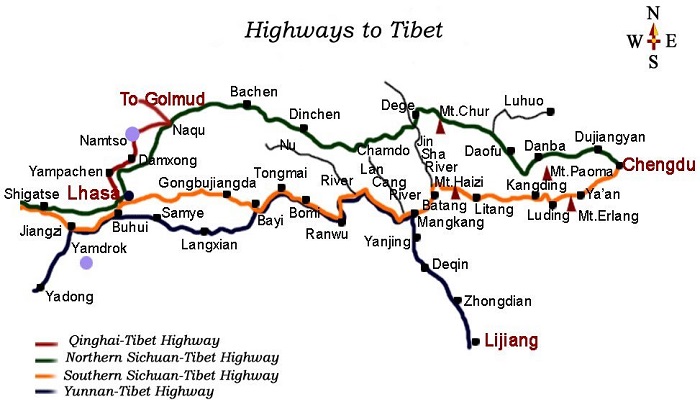
Highways to Tibet
For those who relish scenic journeys, the Qinghai-Tibet Railway offers an unparalleled travel experience. Recognized as the world’s highest railway, this route takes you through expansive landscapes dotted with alpine lakes, verdant grasslands, and towering mountain ranges. The train ride is an adventure in itself—an opportunity to witness the gradual transformation of terrain as you approach the mystical land of Tibet.
Overland Road Trips: Exploring at Your Own Pace
For the intrepid traveler with a passion for road trips, overland journeys from cities like Chengdu to Lhasa present another exciting option. This route traverses diverse landscapes, from the lush Chengdu plain to the rugged highlands of eastern Tibet. Along the way, you can stop in quaint villages, explore winding mountain roads, and absorb the dramatic scenery that defines the region. However, keep in mind that overland trips require careful planning and an adventurous spirit, as the terrain can be challenging and unpredictable.
Essential Permits for a Smooth Tibet Journey
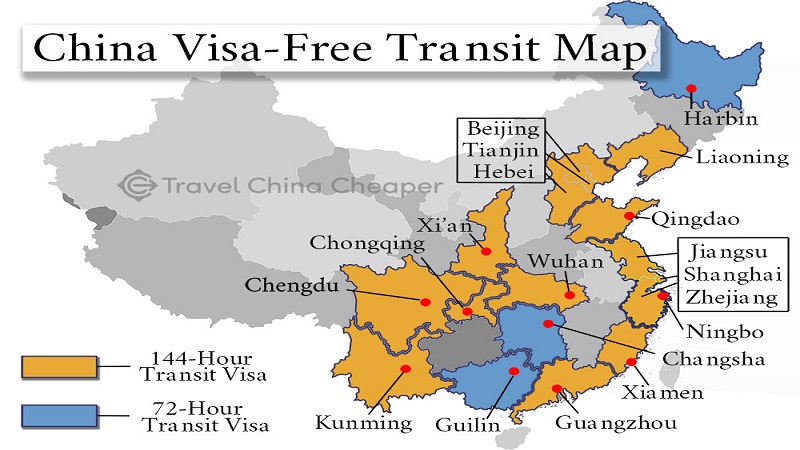
China Visa-Free Transit Map
Traveling to Tibet from the USA involves obtaining at least two crucial permits: a Chinese Tourist Visa and a Tibet Travel Permit. Both documents are mandatory for entering and moving within the region.
Chinese Tourist Visa
Before you can even think about the wonders of Tibet, you must secure a Chinese Tourist Visa (L Visa). This visa allows you to legally enter China from the USA. Here’s what you need to know:
- Application Process: Apply at the nearest Chinese Embassy, Consulate, or Visa Service Center.
- Processing Time and Cost: A typical single-entry visa, valid for 30 days, usually takes about four business days to process and costs approximately 140 USD.
- Documentation Requirements: You will need a passport with at least six months of validity and two blank pages, along with a completed application form and a photograph that meets specific dimensions (48mm x 33mm).
Tibet Travel Permit
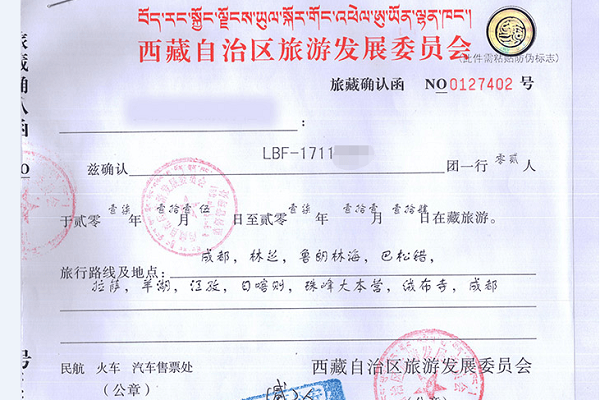
Tibet Travel Permit
Once you have your Chinese visa, the next step is to obtain a Tibet Travel Permit. This document is essential for boarding flights or trains that take you from other Chinese cities to the Tibet Autonomous Region. Unlike the Chinese visa, the Tibet Travel Permit must be arranged through a local travel agency. Here are some key points:
- Agency Assistance: Individual applications for the permit are not accepted by the Tibet Tourism Bureau. Instead, you must work with a local Tibet travel agency that can process the permit on your behalf.
- Application Process: Typically, you will be required to send clear images of your passport’s information page and the Chinese visa page to the agency.
- Processing Time: The permit generally takes 8-9 business days to process, but it is advisable to apply at least 20 days in advance of your planned travel.
- Additional Permits: If your itinerary includes regions outside Lhasa—such as areas near Mount Everest or the western parts of Tibet—further permits will be required. These can be arranged upon arrival, often with the help of your tour guide.
Exploring Tibet Travel Options: Group Tours vs. Private Tours
Guided Group Tours: The Most Common Option
Due to travel regulations in Tibet, independent travel is not currently permitted for international visitors. Instead, all overseas travelers must join a pre-booked guided tour arranged by a local Tibet travel agency. For many American travelers, group tours offer the perfect balance of safety, convenience, and the opportunity to meet fellow adventurers. Whether you’re exploring Lhasa’s cultural landmarks or embarking on a challenging trek, a guided group tour ensures that all logistics are handled professionally.
Private Tours: Personalized Experiences with Local Experts
If you prefer a more tailored travel experience, private tours are also available. With a private tour, you can customize your itinerary to suit your interests, whether that involves extended time at specific attractions, additional cultural experiences, or a slower pace to truly savor the environment. Private tours come with the advantage of flexibility and one-on-one attention from an experienced local guide who can offer deeper insights into Tibetan culture and history.
Why Guided Tours are Essential
Traveling on the Tibetan Plateau comes with unique challenges—high altitudes, unpredictable weather, and rugged terrain require careful navigation. By joining a guided tour, you not only gain access to expert local knowledge but also enjoy the support of a professional who can assist with emergency situations or language barriers. Your guide can help you communicate with locals, interpret cultural nuances, and ensure that your journey is both safe and fulfilling.
Best Times of the Year to Visit Tibet
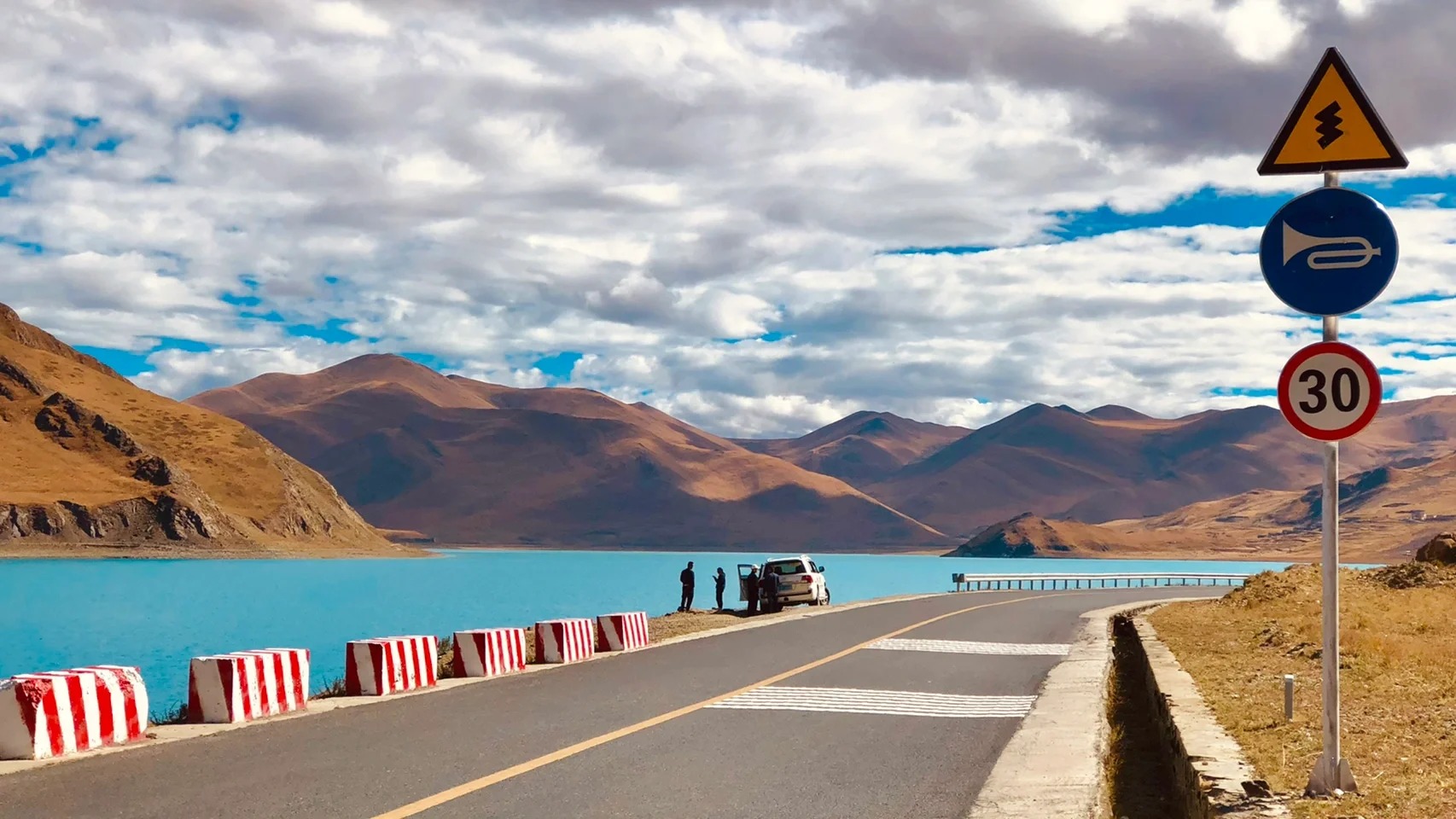
Seasonal Splendors: Weather and Scenic Beauty
Tibet is a year-round destination, but the experience varies dramatically with the seasons. For American travelers planning their trip, understanding the seasonal dynamics can help optimize the journey:
- Spring (April to May): The weather starts to warm up, and the landscape bursts into color. This is an excellent time for outdoor activities such as hiking and photography. Clear skies and comfortable temperatures make it ideal for trekking to Everest Base Camp or exploring the serene beauty of Tibetan lakes.
- Autumn (September to October): Another favorite among travelers, autumn in Tibet brings crisp air, mild temperatures, and breathtaking visibility. This period is perfect for witnessing the vibrant hues of changing foliage, participating in local festivals, and enjoying long, sunny days on the plateau.
- Summer (June to August): While summer can be warmer, it is also the season when many of Tibet’s most exciting cultural festivals occur. Visitors can partake in celebrations, horse racing events, and traditional dances. However, be prepared for occasional showers and slightly higher humidity.
- Winter (November to March): Winter in Tibet is for the intrepid traveler. The landscape transforms under a blanket of snow, offering a stark and dramatic beauty. However, temperatures can be extremely cold, and travel may be more challenging. Winter visits are less common but offer a unique glimpse into Tibetan life during the colder months.
Festivals and Cultural Events
One of the most compelling reasons to visit Tibet is the chance to immerse yourself in its vibrant festivals. These events offer deep insights into the spiritual and cultural fabric of the region:
- Saga Dawa: Celebrated to commemorate Buddha’s enlightenment, this festival is considered the most sacred time in the Tibetan calendar. Pilgrims from all over the region come to Mount Kailash during this period, engaging in rituals that have been passed down for generations.
- Shoton Festival: Held in Lhasa, the Shoton Festival is famous for its grand display of Thangka paintings at iconic monasteries such as Sera and Drepung. This festival is a visual feast, filled with cultural performances, traditional music, and dance.
- Horse Racing Festivals: In regions like Nagqu, horse racing is not merely a sport but a traditional celebration of Tibetan life. These festivals, often held during the summer, feature exhilarating races, local games, and a rich display of regional customs.
Planning your trip to coincide with these festivals can significantly enhance your experience, allowing you to witness the living traditions and communal spirit of Tibetan society.
Must-Visit Tibet Attractions and Tour Highlights
Everest Base Camp
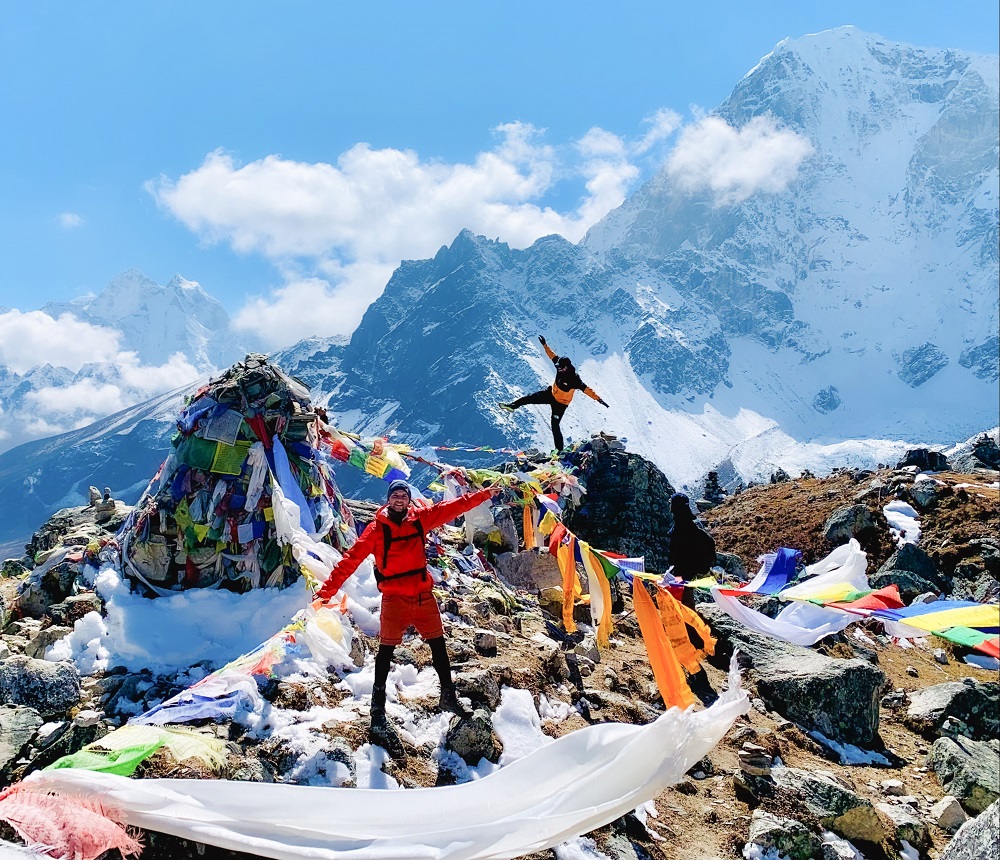
Eerest Base Camp
For many adventure enthusiasts, the trek to Everest Base Camp is the highlight of a Tibetan journey. Unlike the restricted views available from the Nepalese side, the Tibetan approach provides a panoramic view of the colossal north face of Mount Everest. On an 8-day small group tour, you can experience a comfortable yet exhilarating journey with well-equipped vehicles, oxygen support, and professional guides who ensure that the high-altitude environment is both accessible and safe. This tour often includes stops at key points where you can marvel at other towering peaks like Lhotse, Makalu, and Cho Oyu.
Mount Kailash
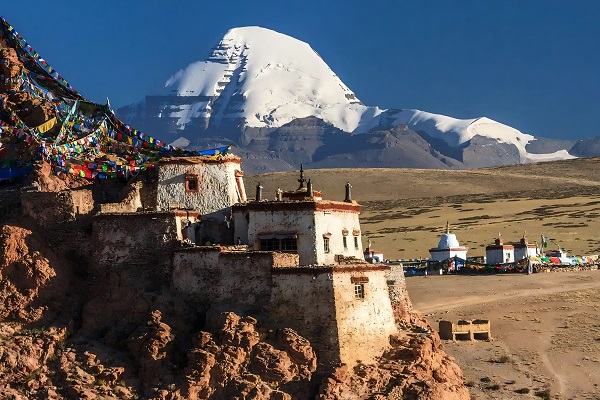
Mount Kailash
Another top attraction is the 3-day pilgrimage trek around the sacred Mount Kailash. This trek is not just a physical challenge—it is a deeply spiritual journey that invites reflection and meditation. Along the route, you’ll encounter stunning landscapes, ancient prayer sites, and the holy Lake Manasarovar. Pilgrims and travelers alike consider this journey as a once-in-a-lifetime experience that offers a profound connection to Tibetan spirituality.
Lhasa
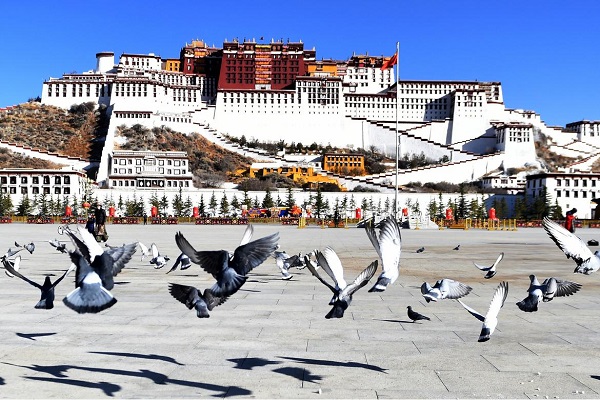
Potala Palace
Lhasa, the vibrant capital of Tibet, serves as a gateway to many cultural and historical attractions. Here, you can explore the Barkhor Kora—a bustling circuit around the Jokhang Temple where locals and pilgrims alike come together in a rhythmic display of devotion. Visit iconic monasteries, study ancient murals, and even participate in Buddhist meditation retreats to gain a firsthand understanding of Tibetan Buddhism. Lhasa’s markets, teeming with colorful handicrafts and traditional artifacts, provide the perfect setting for souvenir shopping and cultural exchange.
Train Journeys and Overland Adventures in Tibet
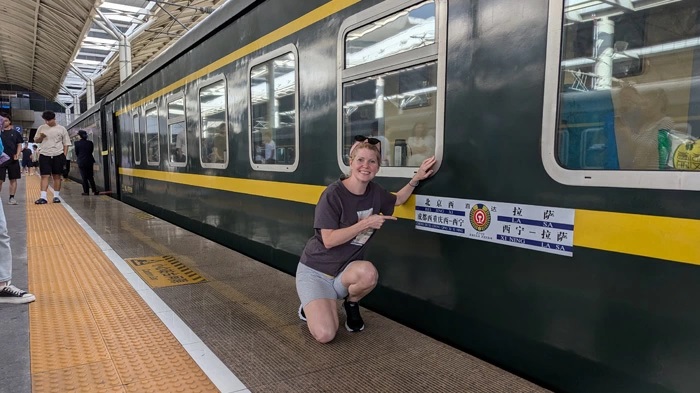
Qinghai-Tibet Train
For those who prefer a more leisurely pace, the Qinghai-Tibet Railway offers a scenic route that is both an engineering marvel and a journey through some of the most spectacular landscapes on Earth. The train ride is celebrated not only for its altitude but also for its ability to provide an intimate look at the vast Tibetan plateau. Alternatively, overland road trips offer the flexibility to explore hidden gems along the way—from remote ethnic villages to serene high-altitude lakes.
Why Choose a Local Travel Agency (Like Journey2tibet) for Your Tibet Adventure?
Expertise and Local Knowledge
Navigating the logistics of a Tibet trip can be challenging, especially with the permit requirements and the high-altitude environment. A local travel agency, with years of experience and intimate knowledge of the region, can offer invaluable support. From arranging your Tibet Travel Permit to curating itineraries that cover both must-see attractions and hidden gems, these agencies are dedicated to ensuring a hassle-free experience.
Safety and Comfort
Traveling in Tibet requires careful attention to safety, particularly given the altitude and remote locations. Local agencies provide well-trained, English-speaking guides who not only help you navigate the terrain but also offer insights into the local culture and traditions. Their support is crucial in emergencies, and their presence ensures that you have a reliable point of contact throughout your journey.
Comprehensive Services
A top-tier Tibet travel agency takes care of everything—from hotels and domestic transfers to entrance tickets for major attractions. This one-stop service allows you to relax and fully engage with the experience, knowing that all the details have been meticulously planned. For many travelers, this comprehensive support is the difference between a stressful trip and an unforgettable adventure.
Traveling to Tibet from the USA Now
Traveling to Tibet from the USA is an enriching adventure that combines breathtaking natural landscapes with profound cultural and spiritual experiences. By securing the necessary permits—a Chinese Tourist Visa and a Tibet Travel Permit—and choosing between group or private tours, you can explore this ancient land with confidence.

